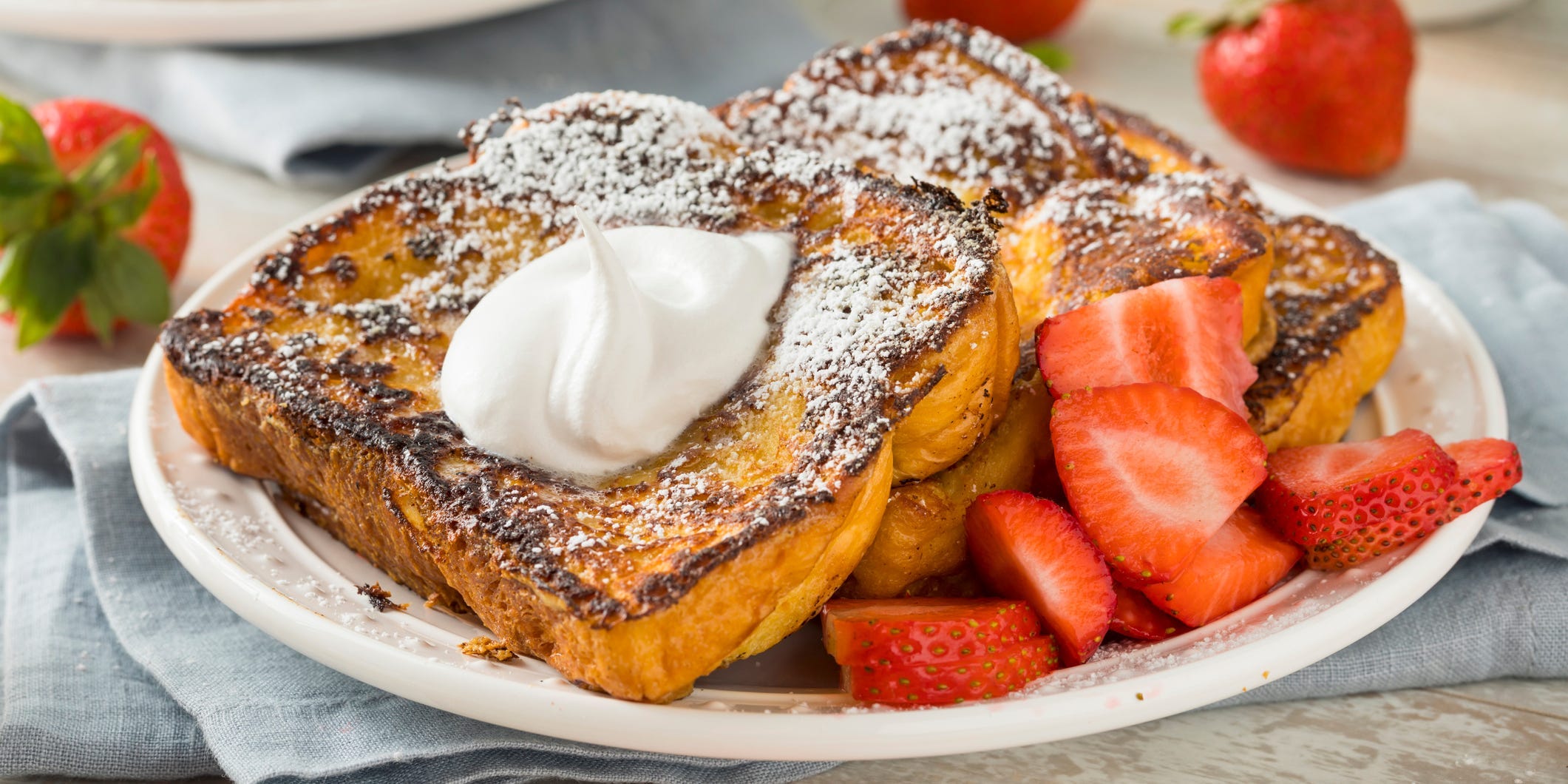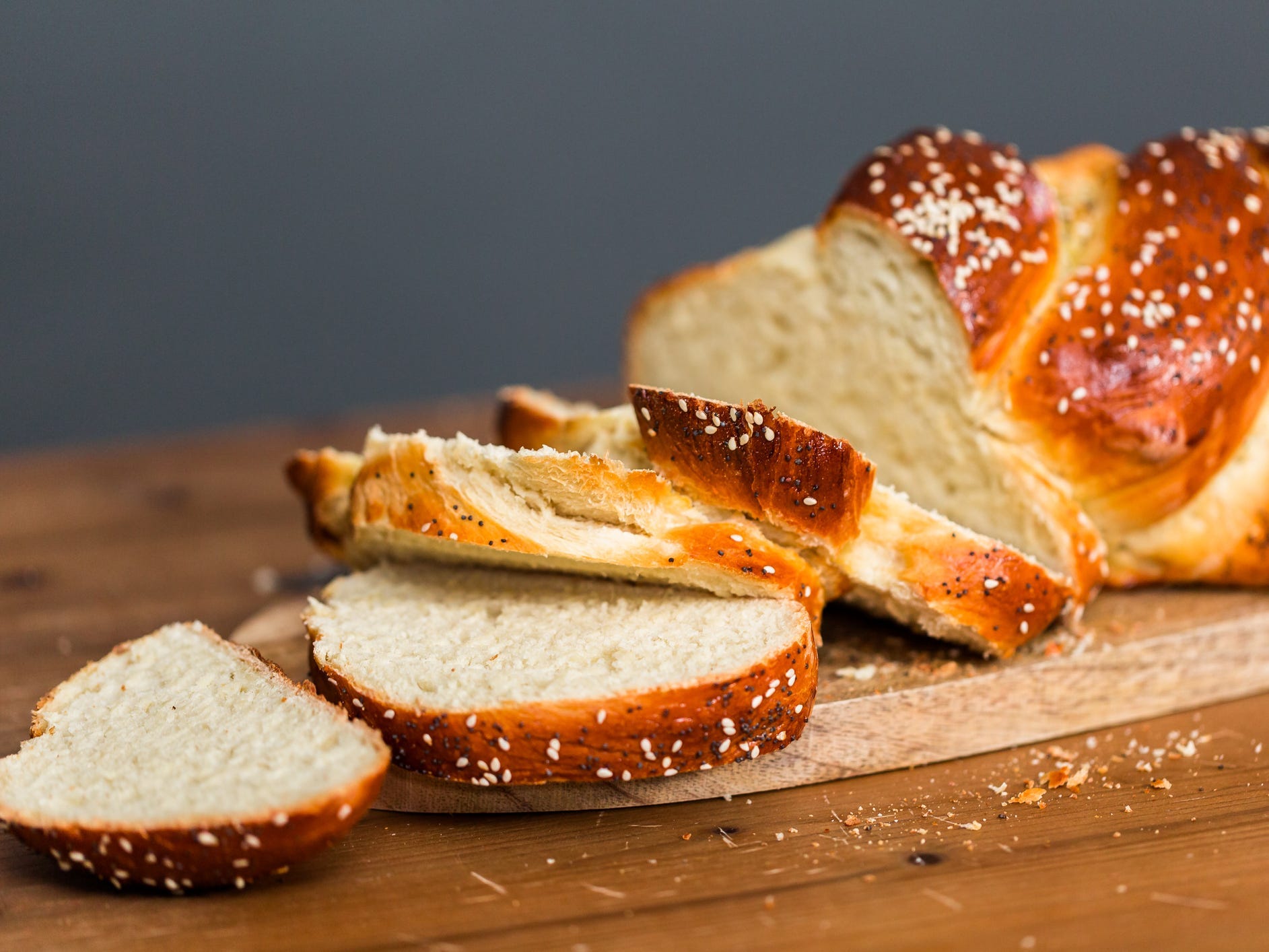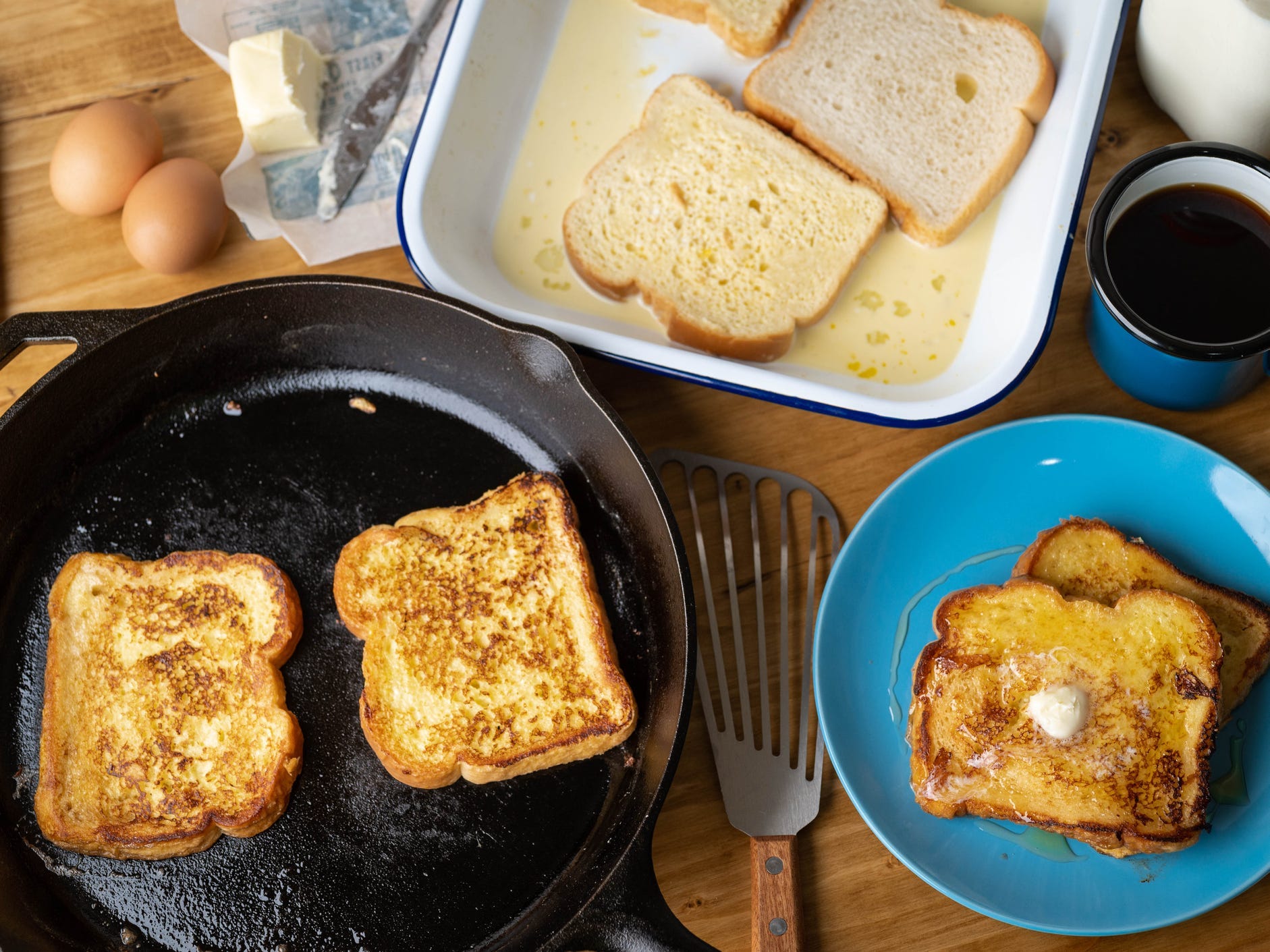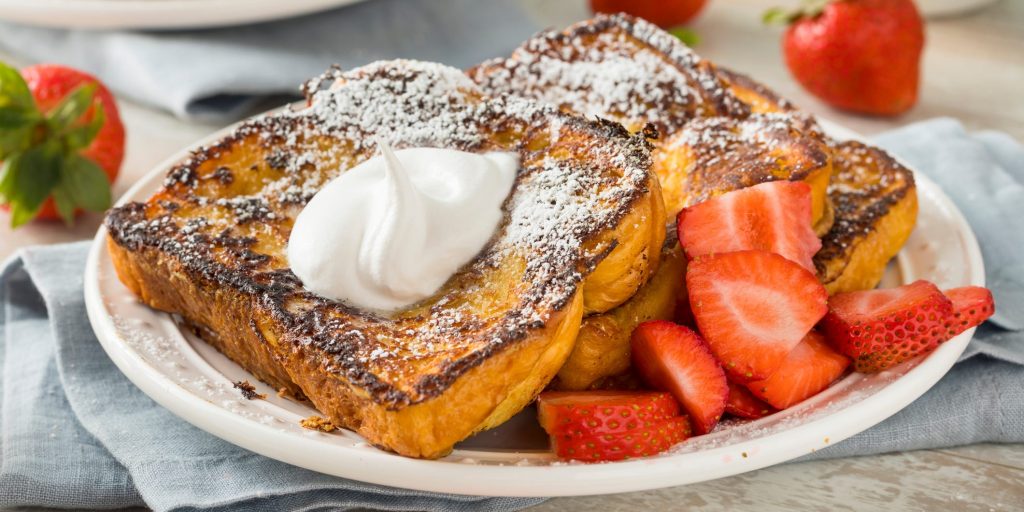
bhofack2/Getty Images
- French toast is easy to make at home and a fun recipe to experiment with.
- Brioche is the best bread to use, but you can use white bread, challah, or French baguette.
- French toast can even be savory if you add cheese, herbs, and spices.
- Visit Insider's Home & Kitchen Reference library for more stories.
It's easy to make French toast and take it in different directions. Pick a bread, make a custard, then add some spices! You can even make vegan French toast with the right substitutions. Chefs Stephanie Oliveira and Ashlee Redger share their foolproof tips for picking the right bread, making a flavorful soaker, and cooking French toast to crunchy, custardy perfection.
The best bread for French toast

arinahabich/Getty Images
The best French toast breads are sturdy enough to soak up custard without losing their structure. Look for a full loaf so that you can cut it to the thickness of your choice.
- Brioche: This is the gold standard among professional chefs because it has more butter and eggs than most breads, which gives the bread more structural integrity
- Challah: Softer and sweeter than brioche, this egg-based bread makes for a fluffier French toast and requires less soaking time.
- Pullman loaf: Your regular sandwich bread – best if it's sourdough to add a slightly tart flavor.
- Potato bread: A sweet spongy bread made with potato starch that soaks up custard well for a soft center.
- French baguette: Portuguese French toast, rabanadas, is made with baguettes. It's soaked first in milk and then in eggs for an extra crispy, eggy exterior.
Softer breads like challah or sandwich bread work best if you have less time to soak it in your liquid mixture because they'll absorb it quickly. Regardless of the type of bread you choose, stale bread works best – especially if you're doing a longer soak – because it will better absorb the custard.
How to make French toast without a recipe

ahirao_photo/Getty Images
1. Pick a bread
Executive pastry chef Stephanie Oliveira says that the choice of bread is the most important step in making French toast. She uses a dense, buttery brioche at L'Avenue at Saks in New York City. "Once we soak it, brioche absorbs the liquid better and also holds its structure," she says.
Babka is another enriched bread that soaks up custard nicely without falling apart. If you have less time on your hands or are looking for a healthier option, whole wheat sliced bread works well too.
2. Make the custard
Oliveira sticks to a 2:1 ratio of milk to eggs. For a lighter, thinner batter, you can add a little orange juice or another fruit juice to the milk and egg mixture to taste.
You can substitute any plant-based milk in place of milk or cream and leave eggs out entirely for a vegan option, although the mixture will likely be thinner. For a thick, custardy consistency without eggs or cream, consider using full-fat coconut milk.
"Eggs help firm up the French toast as it cooks, but you can make vegan substitutions like ground flax seeds, ground chia seeds, or starches like corn or tapioca," says Ashlee Redger of Snooze A.M. Eatery.
3. Choose your spices
Once your custard is whisked to a smooth consistency, add your spices to taste. Cinnamon is the most commonly used spice, but feel free to add seasonal flourishes to your custard, like pumpkin spice or orange zest.
In general, spices are where you can get creative. You can make your French toast savory by adding ingredients like cheese, garlic, herbs, scallions and chili flakes. Or you can keep it sweet with ingredients like nutmeg, anise, and pandan.
For example, Oliveira adds lemon oil and vanilla bean. "I really like the way the lemon oil brightens up the French toast with the richness of the caramel sauce we serve it with," she says.
4. Soak the bread
If you're using thick-cut brioche, soak your bread for several hours so the bread fully absorbs the custard through to the center. Oliveira lets her brioche soak for a couple of hours before flipping it and letting it sit overnight. The next morning, she drains the French toast on a rack before cooking it.
A lighter bread like challah will become too soggy to handle if it's soaked overnight. Instead, an hour soak will suffice. And if you're using grocery store sliced bread, just a quick dip on each side will fully douse your bread. Lightly toast thick slices of bread before dipping in the batter to prevent the all too common issue of sogginess.
5. Griddle or bake it
How you'll cook your bread depends on its thickness as well as the type of soaking liquid you use. Oliveira griddles then bakes her brioche French toast.
For thick-cut Brioche, Oliveria says to sear both sides of the French toast to a deep caramel color, and then bake it at 350 degrees Fahrenheit for 8 minutes. This allows you to sear the French toast without burning it, while ensuring it's fully cooked in the center.
"You know when your French toast is done when the center is set and doesn't have a runny consistency once cut," Oliveira says.
If you're cooking a thinner French toast or omitted eggs from your soaking liquid, a quick pan-fry will do the trick, with 3 to 6 minutes on each side. Cook the first side a little longer for a beautiful caramelized brown.
French toast is cooked through when it feels a little firm and bounces back when you poke it.
6. Top it off and serve
Maple syrup is the most common topping in the United States, but salted caramel sauce is even more decadent. If your French toast is savory, a sweet marmalade, fresh seasonal fruit, or syrup adds a nice contrast.
Cacao nibs and sprouted buckwheat are unexpected ways to add a healthful crunch. And whipped cream adds a nice soft touch.
Insider's takeaway
There are so many ways to make French toast and dress it up with various spices and toppings. Your choice of bread determines everything from the best type of batter to use, to the soaking time and how to best cook it. If you're using an egg-based soaking liquid with a thicker bread, baking is the best way to ensure that it's cooked through. Thinner breads or soakers without eggs are easy to cook on the griddle.
